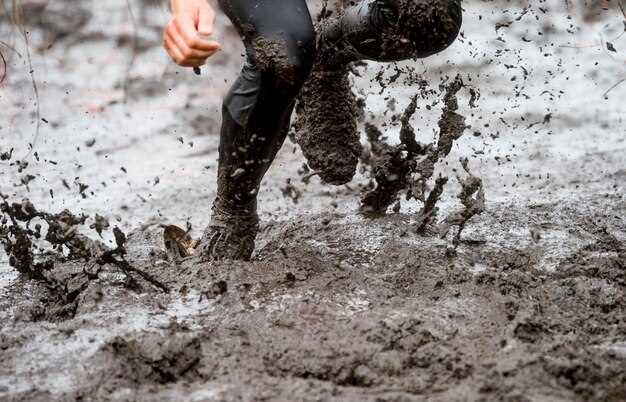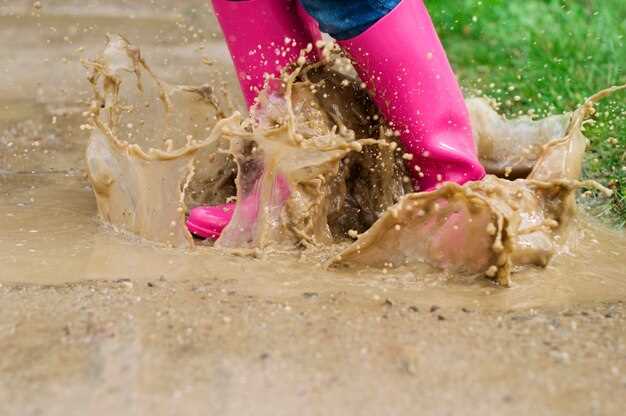Begin with a 5 km muddy obstacle event as first target; complete six weeks of focused training: two strength sessions, two trail runs, one mobility session, one active recovery per week. Aim for five to eight heavy reps per set during strength days, tempo runs at 80–90% max heart rate for 15–20 minutes, and trail intervals of 30/90 seconds for footwork. Keep training logs so youll track progress and adjust load differently when recovery stalls, and maintain regular mobility work.
Avoid cotton; never wear clothes that hold water. Pack trail shoes with 4–6 mm lug depth and replace after 500–800 km of combined road/trail use. Eat a full carb meal ~3 hours prior (3–5 g carbs/kg), sip 250–500 ml electrolyte drink 30 minutes before start, and stow some gels for each 45–60 minutes of exertion. Don’t be fixated on pace during obstacles; prioritize steady breathing and grip technique to reduce awkward slips and risk of injury. Aside from footwear, tape blisters and trim nails; small steps often prevent moments where you fail an obstacle.
Seek local clubs for education and skill practice; group sessions create opportunities for rope climbs, wall climbs, and team carries. Volunteering offers opportunity to study course design and to learn pacing from experienced racers; they share micro-tips that reduce common misunderstandings about gear and recovery. Coaches who focus on mobility and grip are helping athletes build meaningful strength that translates into race-day confidence. When you write post-event notes, write whats worked and whats not; such records foster ongoing improvement and positivity.
Mud Runs – Race-Ready Checklist and On-Course Tactics
Carry extra pair of trail shoes in waterproof bag for post-race comfort.
-
Pre-race checklist
- Check footwear: trim laces to avoid snagging, pair with 4–6 mm tread depth for traction, reinforce weak seams with tape because wet soil rips fabric fast.
- Equipment weight: remove nonessential items and leave electronics in waterproof storage at front vehicle to reduce drag and water accumulation in pockets.
- Hydration plan: drink 500–750 ml two hours before start, then sip 150–250 ml every 15–20 minutes; accumulate electrolytes via one 300 mg sodium tablet per hour when sweat rates exceed 1 L/hr.
- Clothing choices: choose compression shorts with reinforced seams, avoid cotton; use glove grips with finger cuts for gripping ropes without losing dexterity.
- Education and course intel: attend pre-race briefing, review course map, inspect known deeper trenches on route via online shared route notes from previous events.
- Mechanical kit: pack multi-tool, 30 cm strap, spare laces, small repair tape; check kit before leaving base.
-
Starting-line strategy
- Positioning: place fastest runners at front, steady starters mid-pack; if untrained, start conservatively to avoid early lactate spike.
- Pacing rule: stay committed to 80–90% effort on climbs, 60–75% on flats because conserving anaerobic reserve prevents blowups in final third.
- First obstacle tactic: probe deeper waterholes with foot or pole to gauge depth before full commitment.
-
On-course tactics to manage risks
- Foot placement: aim for firm edges of ruts, avoid center where mud will accumulate and pull shoes off.
- Passing etiquette: call out “on your left” at least 5 m before passing to respect other racers’ line and reduce collisions.
- Obstacle technique: for rope climbs, plant feet wide, reinforce grip by wrapping rope twice; for wall climbs, use momentum from hip drive rather than arm-only pull.
- Team behavior: share pacing plan with partners, assign one person to carry repair kit so others can move lighter and faster.
- Blister and chafing response: stop for 60–90 seconds to treat hotspots; quick repair with moleskin prevents hours of pain and faster recovery.
-
Psychology and team dynamics
- Communication: foster concise calls for hazards, forgive minor mistakes quickly so group momentum remains positive.
- Feedback: observe peers’ behaviors and offer corrections constructively after race, not during critical obstacles.
- Conflict management: manage frustrations by asking for reason behind risky move; debrief shared incidents with calm checklist to encourage growth more than blame.
-
Post-race recovery and learning
- Immediate care: rinse exposed skin within 30 minutes, change into dry clothes, repair small gear damage with adhesive tape or sewing kit.
- Nutritional window: consume 20–30 g protein plus 40–60 g carbs within 45 minutes for glycogen repair and muscle growth.
- Review and education: log time splits, note obstacles that accumulate delay, compare notes with teammates to build shared improvements.
- Long-term training note: if performance plateau persists, evaluate whether training plan needs more strength sessions; many athletes, including my husband who trained for years, found good strength gains after 12–16 weeks focused on hill repeats and grip work.
-
Quick checks for race day
- Check shoelaces, tape, gloves, hydration bladders right before starting.
- Ask yourselves if nutrition pack holds required calories for race length; adjust amounts to match predicted sweat rate.
- Accept that mistakes might happen; forgive rapid errors, repair gear if possible, then continue with revised plan.
- Watch others for cues about course changes and adapt constructively to avoid repeating risky behaviors.
6-week beginner-to-finish training schedule for a 5K mud run
Recommendation: Follow a 6-week cycle with 3 run sessions/week, 2 strength sessions, 1 active-recovery session, 1 rest day; aim for consistent volume increase of ~10% per week for long runs and maintain intensity for interval work.
Week 1 – Base: easy run 2 mi at conversational pace; interval session 6 x 200m at target 5K pace with 90s walk/jog recovery; long run 4 mi easy; strength 2x full-body (3 sets: squats 8–12, push-ups 8–12, plank 45s); mobility 10 min post-run.
Week 2 – Build: easy run 2.5 mi; tempo 15 min at sustained hard effort (RPE 6–7); long run 5 mi (include 2 short hills at steady effort); strength 2x (add single-leg deadlift 8–10); practice obstacle-specific moves 15 min (low crawls, grip hangs); use route maps for hill repeats and pacing.
Week 3 – Load: easy run 3 mi; interval 5 x 400m at 5K pace minus 10–15s with 2 min jog recovery; long run 6 mi with last 1 mi at steady focus; strength 2x (include farmer carries 40–60m, pull-ups or negatives 4–6); scheduled active recovery: 30 min walk or swim; clarify pacing with time splits.
Week 4 – Intensity: easy run 3 mi with strides 6 x 20s; interval session ladder: 400m, 600m, 400m at threshold pace with equal recovery; long run 6.5–7 mi slow effort; obstacle practices 20 min that actually simulate race demands: low crawl, rope grip, mud-free balance beams; this week emphasizes grip strength and agility.
Week 5 – Specificity: easy run 2–3 mi; session of 8 x 200m at faster than goal 5K pace to sharpen turnover; long run 5–6 mi with race-pace efforts inserted (4 x 2 min at goal pace); strength 1–2 focused sessions (plyometrics, core circuits 3 rounds); meeting,andor coach check recommended to clarify form and review race plan.
Week 6 – Taper & Race Prep: easy run 2 mi morning of race week, short interval tune-up: 4 x 100m fast with full recovery; long run reduced to 3–4 mi midweek; rest day two days pre-race; equipment check and route maps review 48–24 hours pre-event; commit to sleep 7–9 hours nightly and hydrate consistently.
Daily practices: include 5–10 min dynamic warm-up before runs and 8–12 min mobility after; everyday breathing drills 3–5 min to improve control; smile during training to reduce stress; spend 5–10 min weekly on mental rehearsal to prepare emotionally for obstacles.
Specific exercises for obstacle readiness: bear-crawls 3 x 30m, inverted rows 3 x 8–12, grip hangs 3 x 20–40s, hill sprints 6 x 15s, lunges 3 x 10 each leg. Alternate heavier strength sets and quicker bodyweight series to become comfortable under fatigue.
Nutrition and health notes: prioritize protein 0.25–0.3 g/kg per meal post-workout, carbs timed before higher-intensity sessions; break long training blocks with one full rest day to avoid overuse; if injury or excess pain occurs, consult provider rather than assign blame; small adjustments will keep ongoing progress.
Execution tips: map pacing targets to split times, carry water on runs longer than 60 min, move quickly through transition from run to obstacle practice, log every session to show trends and clarify areas needing work. Use varied routes and fresh surfaces as one of many ways to reduce monotony and maintain positive, committed training habits.
Choosing trail shoes and socks that stay on and drain mud
Select shoes with secure heel cups, heel-lock lacing, quick-drain mesh panels, and 5–6 mm lug depth for consistent grip on soft, wet terrain.
- Fit & sizing: If youre between sizes, size up 0.5 to allow sock swelling; confirm toe-box clearance of 8–12 mm under longest toe during downhill practice.
- Lacing technique: Use double-loop or surgeon’s knot heel-locks to lock heel without over-tightening; perform quick check-ins during long sessions.
- Drainage features: Look for 2–4 large mesh ports per shoe, channelled midsoles, or cutouts in outsole that expel water and debris within 1–2 strides.
- Lug pattern: Choose 5–6 mm chevron or multi-directional lugs for churned soil; deeper, 6–8 mm lugs for heavily saturated trails.
- Drop and stack: Aim for 4–8 mm drop and moderate stack height (20–30 mm) to balance protection and ground feel while avoiding debris trapping.
- Weight target: Many competitive trail shoes fall between 240–360 g per unit; lighter models drain faster but may trade off durability.
Sock selection and pairing:
- Material: Check percent of synthetic content on sock label; prefer blends with nylon + polyester + 2–5% elastane for fit and rapid moisture transport.
- Construction: Choose socks with vented mesh zones, low-profile padding, and molded heel cups that engage with shoe heel to reduce slip.
- Height: Use ankle or mid-calf settings with low-gaiter compatibility; gaiters andor micro-gaiters that integrate with shoe lugs keep out clods while allowing drainage.
- Cushioning: Minimal cushioning dries faster; targeted padding around metatarsal area prevents hotspot formation when fabric is saturated.
Practical tests and care:
- Field checklist: On first outing, perform 20-minute muddy loop; note heel slip percent and amount of retained mud inside shoe.
- Post-run rituals: Rinse inside and out within 30 minutes to avoid salt and clay deposits that cause lasting odor and material breakdown.
- Drying: Air dry at home stuffed with newspaper; avoid direct heat that warps midsoles or separates glue bonds caused by rapid temperature change.
- Break-in and training: Use everyday runs to train foot engagement with new shoes; consistent short runs reveal fit issues faster than long tests.
Fit, function, human factors:
- Fit perspective: A shoe and sock work as partnership; small mismatches grow into blisters, energy loss, and reduced confidence.
- Feedback loop: Engage local sellers and experienced partners for sizing advice; asking for trials or demo swaps yields invaluable feedback.
- Education and upkeep: Regular check-ins on sole wear and mesh integrity preserves performance; simple replacement steps extend lifespan.
- Community tips: Many runners andor couples who race in wet conditions recommend matched sets from same brand for consistent interfaces.
Practical trade-offs and final gifts of choice:
- Aggressive drainage and lightweight construction often cost durability; prioritize according to personal needs: speed, traction, or longevity.
- Small rituals like trimming sock seams and pre-lacing with gaiter clips remove recurring friction points that caused past failures.
- Store spare socks at home and rotate footwear to keep foam and mesh trained for repeated wet exposures; gratitude toward well-engineered gear pays back in comfort.
- Keep perspective: incremental improvements in fit, lacing, and materials deliver large gains in retention and drainage across many runs.
Packing a race-day kit: grip gloves, lube, tape and spare socks
Pack at minimum: 1 pair grip gloves (40–60 g, silicone or textured palm), 30 g tube anti-chafe lube, 3 m roll 1.5″ zinc-oxide or kinesiology tape, 2 spare pairs lightweight synthetic or merino-blend socks, small scissors or safety cutter, 1 resealable waterproof pouch. Keep one small resealable bag for wet socks to hold moisture away from other gear.
Grip gloves: choose fingerless if you need tactile contact; choose full-finger if you want abrasion protection. Look for textured silicone dots or full palm grip and reinforced seams; gloves that weigh 40–60 g per pair balance protection and mobility. Test gloves on a pull-up bar and a wet rope before race day to confirm they do not significantly reduce hold strength; too much lube on palms will reduce friction.
Lube: use a silicone-based stick or cream (BodyGlide-style, ~30 g tube) for hotspots: apply a pea-sized amount to each toe flange, both inner thighs where fabric rubs, base of nipples if chest straps are used. Reapply only if socks are soaked more than 50% – excess lubricant attracts grit. For health reasons avoid open-wound application; clean and dry blisters, then use sterile dressing and tape.
Tape: carry one 1.5″ roll zinc-oxide for toe/foot anchoring and one 1.5″ kinesiology roll for joints. Pre-cut 10–15 strips (8–12 cm) and a few 4–5 cm fingertip strips; store pre-cuts in a small envelope to speed pit changes. Apply tape with 50% overlap, anchor proximally, and never wrap so tight that distal pulses are compromised – check perfusion after application. Practice taping at home; learning simple anchor techniques strengthens your ability to fix gear issues under stress.
Socks and change strategy: wear one pair race-ready and bring at least two spares (lightweight synthetic or merino-blend, midweight cushion). If course crosses water repeatedly, plan to change at the finish: remove saturated socks immediately, dry feet with towel, apply small amount of lube to hotspots, put on fresh socks to reduce blister risk. Pack socks in a waterproof pouch and a thin plastic bag for post-race wet items to keep other gear clean.
Pit bag layout and quick tasks: place gloves and pre-cut tape at top for rapid access, lube in an outer pocket for easy grabbing, spare socks in a waterproof inner pocket. Add antiseptic wipe and one adhesive blister pad per person. During post-race care, prioritize cleaning, acknowledging blisters early and addressing them constructively to avoid infection. A concise checklist reinforces calm action and will improve turnaround time.
Team/mental notes: assign one person to hold the kit and one to assist for faster changes; this simple division of service enhances efficiency and support. Small rituals – checking weather news, staying hydrated, saying brief guidance to teammates – strengthen group focus. If shes racing, confirm her needs explicitly rather than assuming; this willingness to communicate reduces mistakes. Prioritizing clear roles and respectful, positive feedback mirrors Gottman-style attention to small reliable actions that keep team members connected and committed.
Final practical measures: pack enough tape and at least two spare socks per racer; keep gloves dry in a separate pouch; label the kit with your name; carry a 10 g trash bag for soiled items. For additional blister prevention and tape technique reference visit: https://www.rei.com/learn/expert-advice/blisters.html
On-course techniques for climbing, crawling, and water crossings
Drive hips forward on steep climbs: keep weight low, plant lead foot at 45° to slope, push through heel while maintaining three contact points; expect 25–40% higher calf load versus level running.
Use open-hand grip on slippery holds to spread load across palm; switch to full-fist grip for small positive edges. Alternate grip type every 8–12 seconds to sustain forearm endurance. remember to wipe mud from key holds with forearm or glove edge before critical moves.
Crawling protocol for soft ground: keep elbows tucked close to ribcage, pull with shoulders while kicking hips to advance; maintain 60–80% of upright stride cadence in short bursts to avoid anaerobic spike. Use a 2:2 breath pattern while face remains 10–15 cm above surface to reduce inhalation of aerosolized water or grit.
Water crossing technique: for waist-deep flows, turn body perpendicular to current and use wide step shuffle at 30–50 cm intervals; keep pack low and hips forward to lower drag coefficient by roughly 20%. before entering cold stretches, loosen shoulder straps slightly to enable quick pack removal if required by swift water.
| Obstacle | Recommended foot angle | Hand strategy | Pace / cadence |
|---|---|---|---|
| Steep bank climb | 45°–60° to slope | Three points of contact; palm+fingers | Slow controlled steps, 30–40 steps/min |
| Low crawl | Flat foot, drive through toes | Elbow guides; open palm for mud push | Short bursts, 60–80% upright cadence |
| Waist/hip water | Wide shuffle, 30–50 cm step | Forearm brace toward upstream | Steady low-step rhythm, 20–30 steps/min |
Equipment numbers: aim for 4–6 mm lug depth on soles for traction in sticky mixtures; glove material: 1.5–2 mm nitrile if abrasion resistance needed. Carry 1 liter extra fluid per hour of high-effort obstacles above 60% max HR.
Team tactics: quick check-ins every 3–5 minutes sustain communication and prevent silent fatigue. Use short calls for intent (“move left”, “hold”, “pack secure”) to avoid misunderstandings during hard sections. Many teams benefit from pre-race roles: lead for route picking, sweep for lost gear retrieval.
Mental cues: treat discomfort as signal, not failure; draw focus to breath and a single micro-goal per obstacle to avoid losing composure. Human nervous system tolerates repeated 10–20 second stress windows; structure effort accordingly to achieve steady progress.
Relational note for mixed groups: apply parenting-style check-ins with newer participants, couples should agree on pace windows before start, and teammates must keep positivity high while offering specific support. heartfelt encouragement and life-giving feedback help sustain long efforts and prevent disagreements from escalating.
Self-care reminders: hydrate before intense climbs, eat 150–250 kcal per 45 minutes of sustained work, and listen to inner signals for cramps or dizziness. If balance gets compromised, call for a brief stop rather than risking a fall; moving slowly to reset technique often preserves time overall.
Post-obstacle review: after finish of each technical segment, draw quick notes on grip choice and foot placement to refine strategy for next lap. Exploring alternative lines during warm-up helps identify single holds that reduce energy cost by up to 12%.
Keep yourself supported by simple routines: 3 deep breaths before critical move, two-word cue for partner contact, and a agreed handhold signal for help. These micro-habits help achieve smoother flow while working through challenging terrain.
Holiday Relationship Care – Six Practical Habits to Start Now
1) Schedule 10-minute state checks twice daily: morning and 8pm. Ask direct questions: whats one need from me? how are you feeling? Limit responses to two minutes; log main concern in a shared note and resolve issues within 48 hours.
2) Create touch rituals: 30-second front-facing hold or brief hand-on-lower-back when passing; aim for three non-sexual touches daily to stay connected. If it feels awkward, state reason upfront, make eye contact and if needed look away briefly.
3) Plan one romantic micro-surprise weekly: $20 budget, 30-minute activity like sunrise coffee, small gift or new tradition; treat each attempt as opportunity to learn which options feel healthier and convert feedback into repeatable rituals.
4) Use conflict triage: when an issue erupts, apply three-step rule – pause three minutes, name emotion including any deep feeling, then propose one concrete solution. Agree whether to revisit within 72 hours if progress stalls; forgive when apology includes specific reason and measurable behavior change.
5) Maintain duty rotation on shared calendar: assign main tasks, rotate cooking and hosting, allocate 60% of available time for guests and 40% for couple activities; remain committed to stepping away for twenty minutes when stress rates above 7/10 on a shared scale.
6) Ritualize weekly reflection: fifteen-minute debrief where each person speaks uninterrupted for three minutes about feelings, whats worked and whats not, then summarizes needs for themselves. Use empathy scripts such as I felt X when Y and confirm whether both feel connected; archive notes to form new traditions and to look back from future perspectives. Remember small consistent actions over grand gestures.
How to set and communicate three holiday boundary rules with family
Set three explicit rules before any gathering: 1) arrival/departure window, 2) contact consent, 3) conversation topics and duration – communicate each rule in one short written message plus one brief in-person reminder.
Rule 1 – arrival/departure window: state exact times (example: arrive between 1pm–3pm; plan to leave by 6pm). Give reason in one sentence (recharge needs, travel plans). Offer a clear consequence for violations: after two late arrivals, next invitation shifts to an afternoon-only visit for 90 days. Provide this time-box so confusion doesnt accumulate and family can plan sooner rather than later.
Rule 2 – contact consent: require asking before hugs, photos, or borrowing items. Use a simple script: “Please ask before touching or taking.” If someone makes attempts to ignore consent, name behavior and request a pause: “I noticed you reached for my shoulder; please wait until I say OK.” This protects beloved members with sensory limits and models nurturing boundaries without blame.
Rule 3 – conversation topics and duration: agree on three off-limit topics and a soft timer for sensitive talks (example: no politics, no financial interrogation, no medical details; keep reunions under four hours). Designate a neutral signal word for redirection; shared signal can be “pause” or a hand gesture. Use steps for redirection: name behavior, state preferred topic, offer alternative. These steps reduce escalation and strengthen relational trust long-term.
How to communicate rules: send one concise message 7–10 days before event, follow with a five-sentence in-person reminder on arrival. Use conversations that open curiosity rather than accusation: ask “Can we try this approach?” instead of “You always…” If pushback happens, seek first to listen, then restate rule, then offer a small adjustment. This sequence helps theyre feel heard while protecting boundaries.
Scripts and mindset for response: 1) label behavior, 2) state need, 3) propose choice. Example: “When you bring up finances, I feel overwhelmed; can we talk about hobbies instead or move this chat outside?” Use empathy and heart language, avoid blame, and treat each interaction as teaching opportunity. Over time, small consistent steps accumulate into stronger family patterns.
If patterns were resistant or hard at first, schedule short one-on-one conversations afterward to debrief. View those meetings as relational upkeep: check what worked, what didnt, and invite curiosity about other family members’ needs. Seek mutual agreements that balance individual choice with shared celebration, so future gatherings become safer and more enjoyable for beloved relatives.















